| Behind the Plate |
|
2/1: Lefty Grove has the highest winning percentage among 300 game winners, sitting at 68%
2/4: Albert Belle is the only player in ML history to hit 50 or more home runs and doubles in the same season. He accomplished the feat in 1995 with 50 HRs and 52 2Bs 2/5: Mariano Rivera's most valuable season (going by B-Ref WAR) was his 1996 campaign, in which he was 4.8 WAR. Ironically, this season was one in which he only saved 5 games 2/6: Ty Cobb is the youngest player to reach 3000 hits (34 years, 245 days old) 2/8: Babe Ruth is the only player to amass over 2000 hits, walks, runs scored, and runs batted in in his career 2/11: Only Sparky Anderson and Tony La Russa have won WS in two different leagues 2/12: Vic Power was the last first baseman to lead league in triples when he hit 10 in 1958 2/13: Eddie Gaedel is best known as being the 1951 publicity stunt in which the 3'7" Gaedel had a Major League at-bat for the St. Louis Browns. A more obscure fact about Gaedel is that he wore the number 1/8 2/14: Darin Erstad is the only leadoff hitter in MLB history to have 100 RBI in a season (exactly 100 RBI in 2000) 2/18: In order to stay cool, Babe Ruth put a cabbage leaf in his hat for every game, changing the leaf every two innings 2/19: Joel Youngblood was the first and only player in Major League history to have hits in two different cities for two different teams on the same day. On August 4, 1982, Youngblood had a single for the Mets in the afternoon, was traded to the Expos and got a seventh inning single at night 2/20: Ken Ash is the only player in big league history to win a game on one pitch. He accomplished the feat on July 27, 1930, for the Cincinnati Reds 2/21: The only way to get a ground rule triple is if a fielder deliberately touches he ball with his hat or mask (ie, tries to catch it) or throws his glove intentionally and touches a fair ball 2/22: The last player to drive in over 100 runs while hitting less than 10 home runs in a season was Hall of Famer, Paul Molitor. Molitor drove in 110 runs for the 1996 Twins with only 9 home runs 2/25: In 2012, Clayton Kershaw led all pitchers in pickoffs with 12 2/26: In yesterday's Grapefruit League game between the Boston Red Sox (SS) and Toronto Blue Jays, Red Sox pitchers did not throw a single ball through the first 4 innings on just 31 pitches. Knuckleballer Steven Wright threw the first 2 innings (14 pitches, 14 strikes) and Allen Webster threw the 3rd and 4th innings (17 pitches, 17 strikes) 2/27: Located in Louisville, Kentucky at the Louisville Slugger Museum, the world's largest baseball bat is 120 feet long and weighs over 68,000 lbs 2/28: Of players to bat at least .300 last year, Salvador Perez was the only player to have a BABIP less than .300
The other day, I experienced a mid-day epiphany of sorts and came up with the idea to try a podcast for the website. This podcast will aim to just discuss baseball on a more personal level to our audience and get you more daily baseball coverage. With Spring Training fully under way, we figured this podcast would be a good tool so that we could preview every team in baseball. We will go through these rankings in alphabetical order, so tomorrow, we will begin with the Arizona Diamondbacks. As I said, these podcasts will try to be completed on a daily basis, so that you, the audience, gets a more dedicated and informative view on the happenings in Major League Baseball.
We are rookies when it comes to this stuff, so if we are leaving stuff out (not baseball stuff, just podcast etiquette stuff), we would greatly appreciate the response. I personally am not sure how all this will turn out, but I think its a fun project for both ourselves and our audience and we both look forward to beginning this with the team seasonal previews. Once again, if there are any comments -positive or negative- that come with the podcast, we are all ears and are willing to do anything that can improve the process. Please remember, this is a process for us, and we will learn on the job just as we hope you can learn from us. Thank you and we hope you are as excited for this as we are! Aidan Flynn P.S: The above file is basically me saying all of this in audio form; let me know if it works/doesn't work, because this is how we're doing the podcast. Thanks!  The precocious talent that is Stephen Strasburg By Aidan Flynn Game 7 of the World Series. Your number one starter is on the mound: a Ryan, a Seaver, or perhaps a Gibson. The guy with nerves of steel and the most electric stuff on the team. The guy that can go nine innings and put the team on his back. This is the guy who you want the ball in his hands with the light on and the pressure cooking. This is your best pitcher. This is the definition of an ace. The following rankings are players who we feel best fit the attributes of an ace, while also taking into account past performance and future projection. While there are more than just five aces in the game, that is how many we have on this list. Apologies to the honorable mention guys! In terms of up-and-coming right handers, some names to keep an eye on are Dylan Bundy (Orioles), Gerrit Cole and Jameson Taillon (Pirates), and Taijuan Walker (Mariners). All four are power arms with ideal bodies and repertoires to fronting a big league rotation. However, given the attrition rate of pitchers, there is no guarantee these precocious arms will have any major league glory. This attrition capability is something that was definitely accounted for, as you will see with our very first name on the list. Any averse trends could start a chain reaction that could cause a pitcher to flame out prematurely. With that said, we also could not completely ignore past performance and did reward players based on their previous successes. As I just said, a perfect example of this is our number five right hander in the game today. 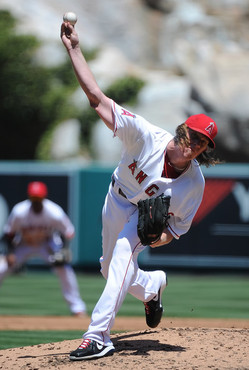 Is falling down while pitching good? 5. Jered Weaver, Los Angeles Angels of Anaheim A season that culminated with 20 wins and a third place Cy Young finish was just another year for Angels ace, Jered Weaver. Although lacking the power arsenal typically seen from an ace, Weaver's finesse repertoire has been incredibly successful over the years. In terms of just simple run prevention, Weaver has been the very best in the American league over the past 3 years (2.73 ERA). It should be noted that there were a couple of trends that prevented Weaver from ranking higher on this list. With a declining K/9 rate (9.35 in 2010; 6.77 in 2012), waning fastball velocity (89.1 mph in 2011 to 87.8 in 2012), and recent injury history (battled back and shoulder trouble throughout 2012), there are some legitimate concerns for Weaver heading into this season. Obviously, as a pitcher has to rely more and more on his defense, he is more susceptible to the whims of BABIP. Any drastic changes in BABIP or team defense could have a damning effect on the pitcher at hand. Additionally, Weaver's back and shoulder issues that plagued him in 2012 leave him vulnerable to more serious problems in the future. Furthermore, these weaknesses could only be further compromised given his mechanics that include severe spine-tilt, something that is typically not a sign of healthy mechanics (see picture above). Even with these concerns, Weaver still has his control (2.15 BB/9 past three seasons) and should greatly benefit from having an all-world defensive outfield trio of Mike Trout, Peter Bourjos, and Josh Hamilton given his extreme fly ball tendencies. While I am wary of Weaver repeating his performances that made him one of the very best in the game, I still have confidence that Weaver can be an ace-like starter at the big league level. Last year, Weaver was a 3.7 win pitcher despite only throwing 188 innings because of his battle with injuries. Assuming full health (which is no guarantee), I see Weaver being about a 4-4.5 win pitcher next season. 4. Johnny Cueto, Cincinnati Reds While just about every diminutive Dominican with a devastating change-up gets slapped with a mini-Pedro label, Johnny Cueto has been the closest to meeting the hype. Even though he doesn't exactly meet Pedro's absurdly high standards (something in which NO ONE does), Cueto is a damn good pitcher in his own right, and deserving of his spot on this list. This past year, Cueto built on his breakout 2011 campaign (in which he had a league-leading 2.31 ERA) with a more-than-respectable 2.78 ERA, league runner up pitcher WAR total of 5.8, and highest ERA+ among qualified starters (152). Additionally, Cueto improved both his walk and strikeout rates to 2.03 BB/9 and 7.05 K/9, respectively. Keep in mind, Cueto has the unfortunate task of pitching in the hitter's haven of Great American Ballpark. This especially hurt Cueto early in his career, as he was more of a fly ball pitcher. However, Cueto has learned to adapt to his home environment by gradually improving his ground ball and home run rates practically on an annual basis, something of which can be owed to an increasing reliance on his excellent changeup. This growth has greatly aided Cueto from being killed in Cincy's small park, which in turn, has allowed him to thrive in this typically hostile environment. Also of note, Cueto has a unique element to his game that only adds to his overall value: the pickoff move. Cueto led all right handers in pickoffs in 2012 (9) and since 2011, Cueto has only allowed 2! runners to successfully steal off of him. While some of this praise should go to Ryan Hanigan (the Reds' catcher during the time), Cueto undoubtedly has a great move (see the gif below). This underrated, even unnoticed trait is one that separates Cueto from his peers when discussing the best right handers in the game today. Accounting for these improvements as well as his Cy Young caliber performance, Cueto should once again be one of the best pitchers in the National League. While he might not be considered an ace by many, I like Cueto's overall skillset and hope his name starts to reach a wider audience. Fronting the rotation for a legitimate pennant contender, Cueto has a realistic shot at being a 4.5+ win player in 2013. 3. Stephen Strasburg, Washington Nationals Certainly the most hyped pitching prospect of recent memory, if not of all-time, Strasburg has experienced quite a start to his professional career. His unbelievable and thrilling 14 strikeout debut (something that I still get goose bumps watching). His unfortunate and tragic injury that required Tommy John surgery, of which prematurely ended his promising rookie campaign. His controversial "innings limit" that saw dogged media scrutiny throughout the summer. Yet, through all of this, his performance has never wavered, with all signs pointing to a Cy Young caliber season in 2013. In fact, Strasburg would have been in the Cy Young race last season if not for the aforementioned innings limit (only threw 159.1 innings). This of course prevented him from racking up the more impressive cumulative statistics (wins, strikeouts, etc) seen from other candidates even while having similar or better rate numbers. For example, Strasburg had a strong 3.16 ERA and absurd 11.13 K/9 rate despite only having 15 wins and 197 strikeouts. Additionally, Strasburg posted the best FIP (Fielding Independent Pitching) in baseball last year, a statistic that accounts only for things a pitcher can absolutely control (strikeouts, walks, and home runs). This statistic indicates what a pitcher's "true" ERA should be, and with Strasburg's FIP being 34 points better than his ERA (2.82 to 3.16), it is reasonable to think that Strasburg pitched even better than given credit for. While I understand this ranking could be considered aggressive given his limited amount of innings thus far, Strasburg's combination of talent and numbers are just too much for him not to be this high. Remember, these rankings take into account both past performance and projection, both of which serve Strasburg well. With a substantially looser innings leash, Strasburg could very well double his 2.7 win campaign, en route to possibly the first of many Cy Youngs. 2. Felix Hernandez, Seattle Mariners It shouldn't be a surprise that the richest pitcher in baseball is also on the short list for the very best. When I profiled the "King" the day his contract details first emerged, I liked the deal for a variety of reasons, even with the inherent risk that comes with being a pitcher.While there were some external factors I liked about the deal (namely, keeping a fan base happy), the biggest positive was none other than Hernandez himself. He's a workhorse (200+ innings past five seasons), prevents runs (career 3.22 ERA), strikes guys out (career 8.3 K/9), keeps the ball on the ground (career 54.4 GB%), and has an excellent walk rate (2.67 BB/9). He's that freakin' good. While some pessimists point to a drop in fastball velocity (93.3 mph in 2011 to 92.1 in 2012), he combated that with the best strikeout, walk, and home run rates of his career. To those that say he will be hurt with the fences coming in this year at Safeco Field (Seattle's home park), Hernandez's ground ball tendencies should prevent him from being hurt much, if at all, by this change. The "King's" overall mastery of his craft honestly doesn't give me a lot of things to say other than he really is that good. Hernandez finished fourth in the CY voting and was worth 4.6 wins for the Mariners in 2012. Expect more of the same as Hernandez is entering his physical prime at the ripe age of 27, with a good probability of posting another Cy Young caliber campaign. 1. Justin Verlander, Detroit Tigers Just as it is obvious that Felix Hernandez is that good, it is just as obvious that Justin Verlander is the best pitcher in the game (or at least in my opinion anyways). Following an impossible to repeat performance in 2011, which capped him both the Cy Young MVP, Verlander practically did just that, finishing second in the Cy Young voting to David Price. He once again led the league in innings (238.1), K's (239), ERA+ (160), and pitcher WAR (7.6), and actually had better peripherals than he did in his otherworldly 2011. In fact, I think he was just as deserving of the Cy Young this year, and if not for his extreme amount of success the year prior, he might have won it. As with Hernandez, there isn't a whole lot to nitpick with Verlander. He's the prototypical ace, with at least three elite pitches (fastball, curveball, changeup), excellent command (2.27 BB/9 last year), incredible durability, and a bulldog mentality. Heck, he is even dating Sports Illustrated cover model Kate Upton, and has his eyes set on being the first $200 million pitcher in the game. The guy literally has everything going for him! Overall, Verlander is a stud and the bona-fide ace of an entire generation. He was over 7 wins last year and has showed no signs of slowing down. Years from now, I believe we will look at Verlander the same way we look at Nolan Ryan, Tom Seaver, and Bob Gibson. He's a hall of fame talent deserving of all the superlatives. Quite simply, he's that good. Honorable Mention:
R.A. Dickey, Toronto Blue Jays Matt Cain, San Francisco Giants Adam Wainwright, St. Louis Cardinals Zack Greinke, Los Angeles Dodgers Max Scherzer, Detroit Tigers 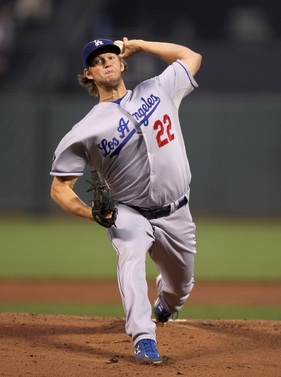 Clayton Kershaw should make a run at 2013 CY By Nick Rabasco:
The game of baseball is rich with very talented left-handed pitchers. From Lefty Grove to Sandy Koufax to Steve Carlton to Randy Johnson, there is a long line of tradition from southpaw aces. Some are starting to close out their great careers, such as C.C. Sabathia and Cliff Lee. Some young stars like David Price and Clayton Kershaw are quickly emerging, and look to have long and healthy careers ahead of them. Although a majority of pitchers in the game are right-handed, 6 of the top 10 WAR leaders for pitchers in 2012 were left-handed, including 3 in the top 5. Left handers are a rarity in today’s game, but prove to be very valuable to a team’s staff. I understand we kind of wimped out of the hard rankings (just rank the top five pitchers in the game, regardless of handedness), but this allows us to discuss more players overall. Nonetheless, the talent among southpaw starters is strong and should remain with the further development of the likes of Kershaw, Price, and the young phenoms Matt Moore and Chris Sale. 5. Cole Hamels, Philadelphia Phillies With the exception of his 2009 campaign, Cole Hamels has been one of the most consistent arms in all of baseball throughout his career. Over the past three seasons, his ERA’s have been 3.06, 2.79, and 3.05 respectively. His ERA+’s have been 133, 137, and 131 over that same span. It doesn’t get much more consistent than that. He has also been extremely durable for the Phillies, as he has thrown at least 200 innings in 4 of the past 5 seasons. Hamels also sports impressive strikeout and walk rates. For his career, his BB/9 is at 2.2 and his K/9 sits at 9. It looks like Hamels will be staying in Philly for a long time to come and he has deserved his contract extension. You can expect Hamels to be just as productive as his 4 win season in 2012 next year. 4. C.C. Sabathia, New York Yankees CC Sabathia is heading his fifth season of his long seven year deal with the New York Yankees. Through the first four years, he has proven to be very successful in the pinstripes. C.C. is most known for being a workhorse, as he has compiled 200+ innings in each of his last 6 seasons, including at least 230 in 5 of his last 6. He also has not had an ERA above 3.38 in his past 7 seasons. His ERA+ has never dipped below 100 in any season, and is at 125 for his entire career. However, C.C. is coming off a season that shows he may be declining just a bit. He still had a great year, but his WAR of 3.3 was the lowest it has been since 2006. He also was limited to exactly 200 innings, which is at least 30 less than 2009, 2010 and 2011. Sabathia will be 32 years old in 2013, but he still figures to be the leader and ace of the Yankees staff in 2013. I would expect him to give his usual 200 innings with an ERA in the mid 3s again for New York. 3. Cliff Lee, Philadelphia Phillies Cliff Lee won six games in 2012. That was all he was able to muster in 211 innings and 30 starts. Some would be ignorant enough to just look at that number and think that Lee was a failure and had a down year in 2012. This is false, as Lee was actually one of the better pitchers in all of baseball. He threw 211 innings and had an ERA of 3.16 with an ERA+ of 127. He also struck out 207 batters and led the league in BB/9 (1.2) and SO/BB (7.39). To further look at Lee’s unbelievable control, he did not hit a single batter in 2012 and let loose just 4 wild pitches. Lee has been extremely durable and consistent since his Cy Young campaign in 2008. He has thrown at least 200 innings in his past 5 seasons and hasn’t had an ERA above 3.22 in any of those 5 years. I expect more of the same for Lee in 2013 and should be around a 4 win player for the Phillies. 2. David Price, Tampa Bay Rays At just 26 years old, David Price has emerged as one of the top pitchers in the game of baseball. Price won the American League Cy Young award in 2012 after he finished as the runner-up in 2010. Last season, Price compiled 20 wins with an ERA of 2.56 and an ERA+ of 149 in 211 innings for the Rays. He also had impressive strikeout and walk rates, with a K/9 of 8.7 and a BB/9 of 2.5. Durability seems to be a key with these pitchers, and Price is no exception. He has thrown at least 200 innings in each of his first 3 full seasons. He has also struck out at least 200 batters in each of the past 2 seasons. Price was a 6 win player in 2012 so it would be tough to expect that kind of production again next season, but I still believe he will be around a 4 or 5 win player in 2013. 1. Clayton Kershaw, Los Angeles Dodgers Clayton Kershaw is just 24 years old and has already established himself as one of, if not the most, elite pitchers in major league baseball. He has led the league in ERA in the past two seasons at 2.28 and 2.53 respectively. He has thrown at least 200 innings in each of his last 3 seasons, including 227.2 in 2012. He led the league in strikeouts in 2011 with 248, and followed it up with 229 in 2012. Another stat he led the league in for 2011 and 2012 is WHIP, at 0.97 and 1.02 respectively. Kershaw gave up just 6.7 hits per nine innings in 2012 which again led the league. His ERA+ for his entire career is staggering at 138. Clayton seems likely to cash in on a monster contract at some point, given his track record and young age. He was a 6+ win pitcher in 2011 and 2012 and I would expect around 6 again for 2013. Honorable Mention: Chris Sale, Chicago White Sox Matt Harrison, Texas Rangers Gio Gonzalez, Washington Nationals By: Aidan Flynn Throughout the years, I have often heard of the notion that teams need "proven" closers in order to succeed. After all, how else would the Yankees have won all those titles without Mariano Rivera? With the reputation of the ninth inning "being a different animal" and more pressure-intensive, it is understandable to see why many fans and more mainstream analysts think that way. Common sense would say that only those that have "been there, done that" can know the intricacies of shutting down the last three outs of a ball game. How else could it be possible for one to "save" the game without having pure intestinal fortitude and balls of steel? While many still hold onto this belief, I believe the myth of the proven closer is one based more on narrative than proven fact. Even though Rivera and Jonathan Papelbon continue to close out games at an alarmingly successful rate, the volatility of major league relievers (that is, reliever performance tends to be unpredictable and erratic) is one that is quite dramatic and noticeable. This volatility is real and can be attributed to the regression to the mean phenomenon, an occurrence seen when extreme performances tend to balance or stabilize over time. While this tendency afflicts all players, major league relievers are especially subject to this because their limited innings do not allow for much stabilization over the course of a season. In other words, the outside factors that allow a pitcher to succeed one season (luck, health, weaker opponents, etc), tend to disappear or decline substantially in the following campaign. Of course, with any sort of trend there are exceptions (the aforementioned Rivera, Papelbon, and Craig Kimbrel), but the turnover rate among relievers is staggering. A study done by Baseball Prospectus' Ben Lindbergh in the book "Extra Innings: More Baseball Between the Numbers", found that an average of 60% of the top 50 relievers one season fail to make the list the very next year. Then, when comparing how those very top 50 relievers did three years later, only 26% of remained on the list. Below lists the findings of Ben's research (click to embiggen) For those that prefer a bit simpler numbers, just look at the saves leaders the past two seasons. Among those in the top ten in saves in 2011, only one (Kimbrel) made the list in 2012. Both show a massive turnover rate and something that prevents even "proven" closers from remaining "proven" for very long. It's not that they cannot handle the heat; it's that their true talents are masked by various factors sometimes not stabilized until years later. For those still that still doubt me, let's look at a comparison of two pitchers, one with the "proven closer" label, and another who has been criticized for lacking the ninth inning mindset necessary to close. 2012 Numbers Pitcher 1: 19 saves, 8 blown saves, 63.2 innings, 8.34 K/9, 4.1 BB/9, 5.09 ERA Pitcher 2: 25 saves, 8 blown saves, 84 innings, 8.04 K/9, 3.32 BB/9, 5.36 ERA Clearly, both pitchers had a rough time closing out games, and perhaps unsurprisingly, both were relieved of the role by the end of the season. Pitcher 1 happens to be Heath Bell, who averaged 44 saves and a 2.36 ERA as closer for the Padres, but struggled in his first and only season with the Marlins. Pitcher 2 is Alfredo Aceves, who had saved only four games in his career before he was thrust into the role in 2012. One is clearly more proven than the other, yet neither one was any good at closer last year. Skeptics will say that despite the struggles, Bell has been successful in the past while Aceves has not. This, although true, is a foolish and idiotic way to rationalize the proven closer. Essentially, one is assigning "the closer mentality" only after the fact. Since Bell pitched well (even though he perhaps was pitching over his head and was the beneficiary of good luck), he gets labeled with having the bulldog mindset necessary to finish out games. Aceves, while a good pitcher in the past, experienced some bad luck in 2012 (admittedly, as did Bell), and gets labeled as lacking the guts to close. Also, his apparent hyperhidrosis (abnormal sweating) probably didn't help his cause with the media and fans alike. This success or failure, whether luck or true skill, acts as a confirmation bias to the "proven" closer hypothesis. This bias completely disregards the actual talent level and makes unnecessary and flawed assumptions based on a limited sample size. More often than not, people mistake past success as proven and past failure as utter incompetence in the role. Clearly, it's just not that cut and dry. Additionally, if the above evidence isn't damning enough, we see unproven pitchers succeed in these roles every year. This year alone saw the major league leader in saves (the Orioles' Jim Johnson had 51 saves) have previously limited exposure to the closer role. Johnson didn't just pitch decent in this "pressure-packed" role; he thrived in the midst of the Orioles' first pennant run in fifteen years. A situation in which most believers would think he would crumble, Johnson was light's out. And it wasn't just Johnson. First year closers Tyler Clippard, Addison Reed, and Tom Wilhelmson all saved at least 29 games with SV% rates of 85% or higher.
The problem isn't the lack of sufficient pitchers ready to step in the role. It's that, quite often, the failures are given more publicity with the successes, giving the notion that only "proven" guys can succeed. In turn, front offices can succumb to the pressures of the media and fans by going out and spending money on a high-priced closer, just for the sake of a false sense of security. Even if the closer pitches poorly, it is seen more favorably because it shows the fans and media that ownership was "trying" despite having clearly better in-house alternatives. Not only is it bad business, but it only further adds to the legend of the "proven closer". Often, when inexperienced pitchers are assigned the role of closer, they don't have a very long leash. Given its rising status as a prominent position, closers that fail to do the job (even with limited opportunities) get wrongfully branded as being incapable of the job. I find it ironic, that before their actual performance is looked at (example: maybe pitcher X just isn't very good), people automatically assume that that pitcher just doesn't have the stones necessary to close. This probably bothers me most of all when I hear people discuss the need for the "proven" closer. This last point of mine is more opinion than fact, but I always felt that if those that could make it to the major leagues and have the stomach to play in front of 40,000 drunk, obnoxious, obscene, fans every night, with even more watching on live television, they wouldn't be too fazed by three outs at the end of the game. Besides, those that are fazed by that stuff probably don't last long enough to even get the opportunity to close. These people have literally spent their entire lives playing baseball, specifically training their bodies and minds to withstand the pressures of the major leagues. Call me cynical, but I have a hard time believing a couple of outs, one of thousands made in their careers, should be any different. By Aidan Flynn
Initially a ploy to end the run of mound dominance seen in the late 60's, the designated hitter has certainly been the most controversial position in the game since its inception forty years ago. While the National League remains tied to strategy and small-ball, the American League's adoption of the rule has eschewed this facet of the game with the sole purpose of maximizing offensive production. Undoubtedly, the DH has created the opportunity for many to showcase their great offensive talents, with no better example than all-time great, Edgar Martinez. Of course, DHs don't quite bring the same value as a field player, because they can only impact the game one way: with the bat. So, it's only appropriate that this list will focus on the best full-time hitters at the position. I say full-time, because more and more teams use the DH as a platoon/day-off arrangement, with permanent DHs as sort of a dying breed. Because of the dearth of full-time DHs, we only have the top three designated hitters listed. Onto the rankings... 3. David Ortiz, Boston Red Sox Following his poor 2009, folks throughout the game were calling for the retirement of David Ortiz. That year, Ortiz hit just .238/.332/.462 and posted the worst K and BB rates of his Red Sox career. However, Ortiz has since silenced his critics by actually steadily improving since that '09 slump, culminating in 2012 with a career high in OPS+ (171) and career low in K%. While Ortiz's late career revival is one that certainly goes against the norms that come with player aging, that doesn't mean Ortiz can't sustain it, at least for a year or two. However, if there is something to derail Ortiz's production, it would be his recent run of injuries. Last year, Ortiz only played in 90 games because of an Achilles strain, forcing him to go on the DL on two separate occasions. As a big-bodied, one-dimensional, aging player, these Achilles issues are certainly concerns with Ortiz's future production. With that said, every significant offensive statistic of Ortiz has been trending upward for several years now, and even if he were not able to duplicate his excellent 2012, he should remain a valuable offensive force anchoring the Red Sox lineup. He was about 3 wins in only 90 games last year, so if healthy, he should be worth at least that much in 2013. 2. Billy Butler, Kansas City Royals Nicknamed "Country Breakfast" (or at least according to his B-Ref page), Butler ate AL pitchers alive this past season, with a .313/.373/.510 line, including a career high 29 HRs and 107 RBI. Entering his age 27 season, Butler has been remarkably consistent arriving on the big league stage during his 21 year old rookie campaign. The past four years are an especially good example of this consistency, as he has had at least a .291 BA (but never higher than .318), a .361 OBP (but never higher than .388), and a .461 SLG (but never higher than .510). Previously one of the best doubles hitters in the game, Butler finally developed the power Royals fans have been praying for, hitting the aforementioned career high 29 home runs. Assuming last year's power display wasn't a fluke (although you know what they say about assuming...), Butler could very well see his power continue to develop as he enters his physical prime. There's no hiding Butler can't run and can't field, but the very absence of these skills allows Butler to flourish at the designated hitter position and highlights what he is truly good at: flat-out raking. Last year, Butler tied his career high in WAR at 2.9, so it would be pretty plausible for Butler to be around and/or surpass that total this year. 1. Edwin Encarnación, Toronto Blue Jays Affectionately nicknamed E5 (an homage to his more forgettable times as a starting third baseman), Edwin Encarnacion absolutely exploded onto the baseball landscape in 2012, spending a majority of the season penciled in as Toronto's DH. Although he was always a productive bat, Encarnacion established career highs in just about every offensive category hitting .280/.384/.557 with 42 bombs and 152 OPS+. Without having to worry about his defensive shortcomings, E5 (much quicker to type than Encarnacion...) has thrived in his new role. Thus, perhaps it is no coincidence that E5 has seen his two best offensive production (using OPS+) the past two seasons while spending a majority of his games at DH. One concern with E5 is whether his 2012 is sustainable or not. Last year could very well have been a fluke; it also could have been a sign of a player entering his prime and finally being comfortable. I honestly have no idea which it is, but like with most questions in life, the answer probably resides somewhere in between. Encarnacion put up a career high 4.6 WAR last year, and while I don't think he'll replicate last year's extraordinary offensive performance, I like his chances to at least be a 3.5+ win player next year. Honorable Mention: Adam Dunn, Chicago White Sox Kendrys Morales, Seattle Mariners 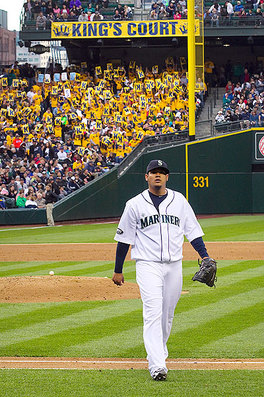 The King and his court By Aidan Flynn
The King’s Court should be in session for a little longer now, as ace Felix Hernandez agreed to a record-breaking, seven year, $175 million extension with the Mariners. Hernandez, coming off a fourth place finish in the Cy Young voting and the 21st perfect game in big league history, will enter 2013 at 27 years young, which could be surprising to some given that he already has eight Major League seasons under his belt. As a pitcher, there is little the “King” cannot do. He is a workhorse (200+ innings past five seasons), prevents runs (career 3.22 ERA), strikes guys out (8.3 K/9), keeps the ball on the ground (career 54.4 GB%), and has an excellent walk rate (2.67 BB/9). In short, Hernandez is on the shortlist for best pitchers in the game today and this contract is undoubtedly paying him like one. At $25 million per year, Hernandez’s AAV (Average Annual Value) is tied for the most among pitchers. However, as good as Felix is and has been throughout his career, is this kind of investment smart? For 99% of pitchers, I’d vehemently say no. Pitchers as a whole are extreme risks, as we see hundreds of pitchers land on the DL each year. Even those with supposedly perfect mechanics (see Prior, Mark), can and do flame out just because of the very delicate nature of pitching. Just think about it; there are way more Mark Fidyrich’s, Fernando Valenzuela’s, and JR Richard’s, than there are Nolan Ryans. Pitching is a science and even now, we are still scratching the surface of very intricacies of throwing a baseball sixty feet six inches. Nevertheless, Felix is unlike 99% of pitchers and is among the elite in nearly every aspect of the art. For example, Baseball Prospectus’ pitching mechanic guru, Doug Thorburn, recently gave Felix much praise in his mechanical development since his Major League debut, (subscription required). While I would be very hesitant to invest that much money and years into ANY pitcher, Hernandez (along with Justin Verlander and Clayton Kershaw) is one of the few exceptions to that rule. Additionally, I feel as though this is one move Seattle had needed to make. For years, Felix’s name has been whispered along the trade rumor grapevine, offering the potential of a king’s ransom (pun completely intended). Yet, with the on-field product continuing to struggle (last place finish in AL West in 2012), fans have shown up less and less to games. The past two years have brought about Seattle’s lowest yearly attendance figures since 1995, and the club actually drew about 100,000 less fans this year despite winning eight more games. The only reason this number isn't even lower is quite simply, because of the King. Seattle’s favorite son was signed as a 16 year old prodigy and has spent his entire career in the Mariners organization. The love affair is so great, that the left field bleachers during his starts transform into a yellow, manic, mob known as the King’s Court (hence the reference in the intro). For anyone that has seen the Court in action, they surely understand why Felix is so important to the club and city. He is Seattle. He is the ultimate Mariner. He is the King. 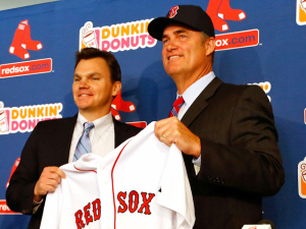 Ben Cherington (left) and John Farrell (right) By: Nick Rabasco
In 1965, the Boston Red Sox hit the century mark in losses, going 62-100. 2012 marked the worst season Boston has had since that abysmal year in 1965 by going 69-93. This breakdown in 2012 goes without mentioning the worst collapse in baseball history in 2011 when the Red Sox failed to hold a 9 game September wild card lead. The list of problems for this team in the past two campaigns is a long one. The clubhouse seemingly fell apart in 2011 and that carried right into 2012. Bobby Valentine replaced two-time World Series champion Terry Francona, proving to be a huge mistake for Boston. Valentine and his players had ongoing conflicts all season long, and he was quickly dismissed the day after the 2012 season mercifully ended. These clubhouse conflicts were just part of the problem, as the players were either injured or just simply underperformed. With that said, Ben Cherington was on a mission heading into the 2013 offseason. This tall task for Ben was certainly not an easy one, having to find a new manager and players who can not only produce on the field, but be leaders in the clubhouse. For the Red Sox, it all begins with pitching. This was the biggest problem in 2012, so we start off with Ryan Dempster, the man Cherington went out and got to fill a spot in the rotation. Dempster has proven he can eat up innings and has been an average pitcher for his career as a whole (99 ERA+). However, since 2008, he has been an above average pitcher. The numbers look good on Dempster over that span, however his age (36) and the fact that he is moving from the National League to the American League, and Fenway Park for that matter, raise some concern and are reasons why I think Dempster will be a middle of the rotation guy. Everybody else in the rotation is a question mark for 2013. John Lackey was historically bad in 2011 and is coming off Tommy John surgery. There is no guarantee that he will return to his Angels form. Felix Doubront had flashes of excellence in 2012; however, he was inconsistent. He ended the season with an ERA approaching 5 even though he led the staff in strikeouts. Doubront should improve if he can get deeper into games and limit his walks. Of course these improvements are no guarantee and Doubront could regress. As for the two leaders of the staff, Jon Lester and Clay Buchholz, improvement is as close as you can get to a guarantee. I am not saying they will get back to being Cy Young contenders, but I am very confident, if healthy, that they will show great improvement. From 2008-2011, Lester was one of the best and most consistent pitchers in all of baseball (135 ERA+ over that span). In 2010, Buchholz led the league in ERA+ (187) and was second in ERA (2.33). Both of them are still young, and their track records show they will not be as bad as they were in 2012 when Lester had an ERA+ of 90 and Buchholz was at 95. If these guys can stay healthy, I expect a better 2013. As far as the bullpen is concerned, I believe what the Red Sox have put together has the potential to be amongst the best in all of baseball. First of all, they have more than enough depth. They have added Joel Hanrahan to close out games for the Sox in 2013. He has put up some impressive numbers over the past 4 seasons with ERA+’s of 244, 112, 203 and 138 respectively from 2009-2012. However, his walk rates are a cause for concern. He walked over 5 batters per nine innings last season and his career BB/9 is 4.3, well above league average. His career WHIP is also 1.38, which is high for a reliever. With Daniel Bard coming back to the bullpen after a failed experiment in the starting rotation, Hanrahan will be joined by him, Andrew Bailey, Andrew Miller, Junichi Tazawa, Alfredo Aceves, Franklin Morales, Craig Breslow, Koji Uehara, Mark Melancon and Clayton Mortenson. This tremendous combination allows the Red Sox flexibility and many options for left handers, long relievers and the back end of the bullpen. Aceves, who has had more success as a starter or a long reliever figures to be the long man along with Morales and Mortenson. The Sox added Uehara this offseason on a one-year deal, and he figures to work in the 7th and 8th innings along with guys like Tazawa, Miller, Bailey, Melancon, Breslow and Bard. An extremely important statistic to look at for pitchers is WHIP. Inconsistency with pitch location, whether it means missing out of the zone or in the zone, was obviously a huge problem for Boston in 2012. Limiting base runners not only leads to less runs allowed, but it aids in preserving pitch counts and allows guys to get deeper into games. It is no coincidence that in 2004 and 2007 (World Series champion seasons) the Red Sox as a staff led the league in WHIP as a team. In 2012, the sox staff finished 10th in the AL in WHIP. I believe the Red Sox staff will be much improved in 2013; however, I still do not believe it will be quite enough to be able to win the division compared to the pitching staffs of teams like Toronto and Tampa Bay. Offensively, the Red Sox should be near the top in the league again. With Jacoby Ellsbury, Dustin Pedroia, Will Middlebrooks and David Ortiz at full health, it already improves the offense from a year ago. Ellsbury played in 74 games in 2012, with Ortiz at 90, Middlebrooks at 75 and Pedroia at 147. Although Pedroia stayed on the field, he played through a thumb injury for about half the season. These four players will go along with several additions to the lineup. Mike Napoli, Johnny Gomes, Shane Victorino and Stephen Drew were picked up by Cherington this offseason. Starting with Napoli, he will not replace the production of Adrian Gonzalez at first base, offensively or defensively. Health is a huge concern for Napoli as he has only played in 140 games once in his 7 year career (114 is the second most games he’s played). Playing first base, instead of catcher, should aid his health. When he is on the field, he is a very productive player. Although he will not hit for a high average, he gets on base and hits for power. He has hit at least 24 home runs in each of the past 3 seasons. Expect him to be a 25-30 home run guy for the Red Sox with the help of the green monster. He has also posted a career .356 OBP, which bodes well for what the Red Sox are trying to do in 2013. Even today, the importance of OBP remains underrated. The Red Sox lead the lead in team OBP in 2003, 2004, and 2008 and were second in OBP in 2007, just 4 points behind the league leader. They reached the 7th game of the American League Championship series in all 4 of these seasons, winning the World Series in 2004 and 2007. In 2012, the Red Sox won 69 games and finished 10th in the AL with a team OBP of .315. Again, this is not a coincidence. With guys like Ellsbury, Pedroia, Ortiz, and Napoli healthy, that team OBP should rise significantly. Shane Victorino took a step back last season with the Phillies and Dodgers. He batted just .245/.316/.351 with an OPS+ of just 85. He will provide good defense for the Sox in right field; however he needs to be able to get on base at a higher rate in order to utilize his speed. He has a career .341 OBP so I would expect it to certainly rise from his horrible .316 mark in 2012. Jonny Gomes is a guy who put up very solid numbers in 2012, although it came in just 99 games. He batted .262/.377/.491 with an OPS+ of 140 and 18 long balls. These kinds of numbers are all above his career marks, however if he can put up production that is even close to this for a full season, Red Sox fans would be very satisfied. He is however, in completion with guys like Daniel Nava to get playing time in left field. Gomes has struck left handers very well over the course of his career and figures to get all of the playing time against them in 2013. Stephen Drew is coming off a major injury, but figures to be at full health come spring training. This is a move that I like a lot for the Red Sox. They were able to get him for only one year, which works out well with guys like Jose Iglesias and Xander Bogaerts needing more time in the minors. Drew has a career line of .265/.328/.433 and an OPS+ of 96. His 162-game average for home runs is 15, and if he can put up a number like that, the Red Sox would be very impressed. These additions will be nice additions to a lineup that includes Ellsbury, Pedroia, Ortiz, and Middlebrooks, and we all know what those guys are capable of doing. These guys are also proven to have been great in the clubhouse which may be just as important as production on the field considering the problems the Sox have had in the past couple seasons. Overall, the Red Sox have certainly improved. Offensively they have added some nice pieces along with getting their regulars back healthy. I also believe their bullpen and the amount of depth they have will prove to be successful and help the team win close games. However the biggest and most important aspect to watch out for in 2013 is the starting rotation. If they can stay healthy, give the team innings, and just flat out pitch better than last season, this team can compete for a postseason spot. I do not believe they will win the division because the competition is so heavy in the game’s best division. I am going to predict an 85 win season for Boston in John Farrell’s inaugural season as manager at Fenway. This upcoming season, the Houston Astros will move from the NL Central to the AL West, where they once again expect finish at the bottom of their division after ending 2012 with a league-worst 107 losses. It should do them no favors then, that the Astros now must face 2012 playoff teams, the Oakland Athletics and the Texas Rangers, as well as the restocked Los Angeles Angels, on a regular basis. Monday night saw a trade in which two of these newly-created rivals, the Astros and the Athletics, swapped young talent. In this transaction, Oakland received infield utilityman, Jed Lowrie, and pitcher Fernando Rodriguez, while the Astros acquired a trio of young talents in the form of 1B/noted left-handed masher Chris Carter, right-handed pitcher Brad Peacock, and catcher Max Stassi. Below, Nick has a quick write-up on Jed Lowrie, followed by my (Aidan's) outlook on the new Astros and my first impressions of the trade
By Nick Rabasco: In 2012, Jed Lowrie played in a career high 97 games. Games played has been a huge problem for Jed in his 5 year career, with numerous DL stints during that time. Lowrie has shown flashes of being a solid and productive player. For example, in 2010 with the Red Sox, he batted .287/.381/.526 with an OPS+ of 139. However that came in only 55 games and 197 plate appearances. Last season, Jed was productive as well in 387 plate appearances, batting .244/.331/.438 with 16 home runs and an OPS+ of 108. Despite his low batting average in 2012, he was still able to walk a lot and get on base. He walked 11.1% of the time (10.1% in career), which is above the league average by almost 3%. Clearly, it should be no surprise that he was coveted by Billy Beane and the Moneyball A's. In addition, the A’s are receiving a very versatile player, who has experienced playing time at all infield positions. For his career, he has saved -4 runs with a fielding percentage of .977. Lowrie was a 2 win player in 2012 for Houston, but if he is able to put it all together and stay on the field for a full major league season, I believe Lowrie can put up a WAR of around 3. By Aidan Flynn: Unlike the current island of misfit toys donning the Astros uniform in 2013, Houston added a decent amount of talent in this trade. The only big leaguer of this bunch is Chris Carter, who spent time at 1B and DH for the division winning A's. Carter has big time power, evidenced by his 13.6 AB/HR rate, that would have ranked fourth in the American League had he enough plate appearances to qualify. However, as one usually expects with big-time power, Carter does have an excessive strikeout rate. For instance, Carter's K rate of 31.9% ranked 9th highest among those with at least 200 PA's. In spite of this, Carter should still remain an offensive threat because of his aforementioned power potential and well above average walk rate (15%). Additionally, Carter can be better utilized as part of a platoon, just as he was last year in Oakland with lefty Brandon Moss. Carter, a right handed hitter, hit lefties to the tune of a .241/.404/.494, which was actually suppressed by nature of his tough home ballpark. Moving to the more hitter-friendly Minute-Maid Park, Carter should certainly improve his offensive numbers and help solidify an otherwise anemic Houston offense. The next piece of this trade is once highly touted right-hander Brad Peacock. Peacock's name may sound familiar, as he was indeed, the very same Peacock sent to Oakland as part of last year's Gio Gonzalez swap. 2012 was certainly a down year for the young righty, as he was killed for a 6.01 ERA in 135 innings for Triple-A Sacremento. To most, a 6.01 ERA in any level for an extended period of time would be the death blow to a shot at the major leagues; however, with Peacock, there are some silver linings in his otherwise dreadful season. For one, Peacock struck hitters at a well above-average rate of 9.3 K/9, flashing a plus curve ball and a fastball that can touch 96. Additionally, Peacock was the unfortunate recipient of bad luck, as he had an absurd .340 BABIP during his 2012 minor league season. Furthermore, Peacock could be a weapon in the bullpen if starting doesn't work out, as he features the plus offerings necessary to succeed in that role. All told, Peacock still has the talent to succeed, even with last year's struggles. Of all the players going to Houston, the farthest away from achieving big-league stardom is catcher Max Stassi. Stassi finished up 2012 in High-A Stockton, where hit hit .268/.331/.468 with 18 2Bs and 16 HRs. Stassi still has some work to do on offense, as he strikes out too much and has too liberal of an approach at the plate. Defensively, Stassi has always been advanced beyond his years, with a strong and accurate throwing arm and excellent receiving skills. There is a good chance Stassi will make it to the Majors with his glove alone and any offense contribution whatsoever could make him everyday player. First Impressions: Winner: Astros For an oft-injured man of glass, the Astros made out pretty well in this trade. They infused some youth and skill into a talent-starved major league team. In short, they acquired a strong platoon hitter, a good innings-eater that should at worst be a #4 starter or set-up man, and a glove first catcher. That may not seem like much, but all of these players are close to major league guarantees and should represent major upgrades over the replacement players currently filling out the starting spots. This will not necessarily make the Astros a better team in 2013, but they had no shot at competing, with or without Lowrie. To me, this trade undoubtedly puts them in a better shot at contending in the coming years. Loser: Athletics Don't get me wrong; Lowrie is a very talented player and one that is certainly capable of making this a coup for the A's. However, players with his kind of injury history just aren't cured with the wave of a magic wand and I have a hard time seeing him staying healthy enough to make this a win for the A's. I understand the A's didn't trade top 100 prospects or anything but still, the lost value in a strong platoon partner and back-end innings eater still outweighs the gain of Lowrie in my opinion. | |||
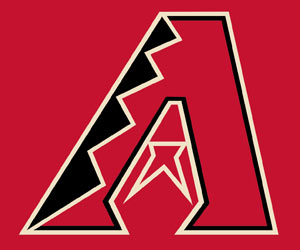
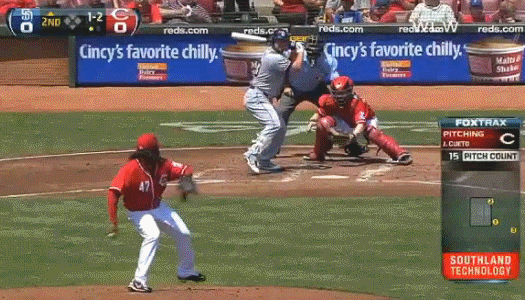
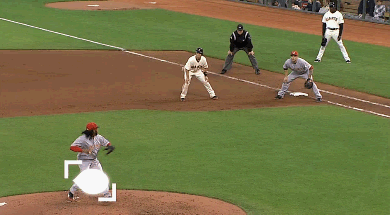
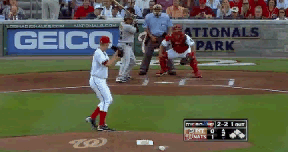
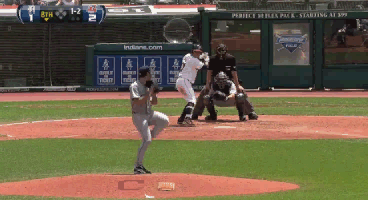
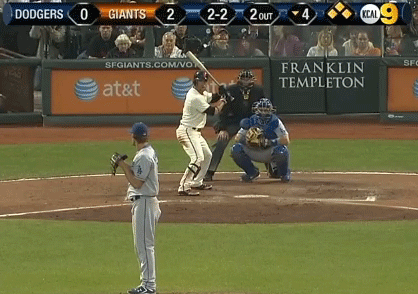



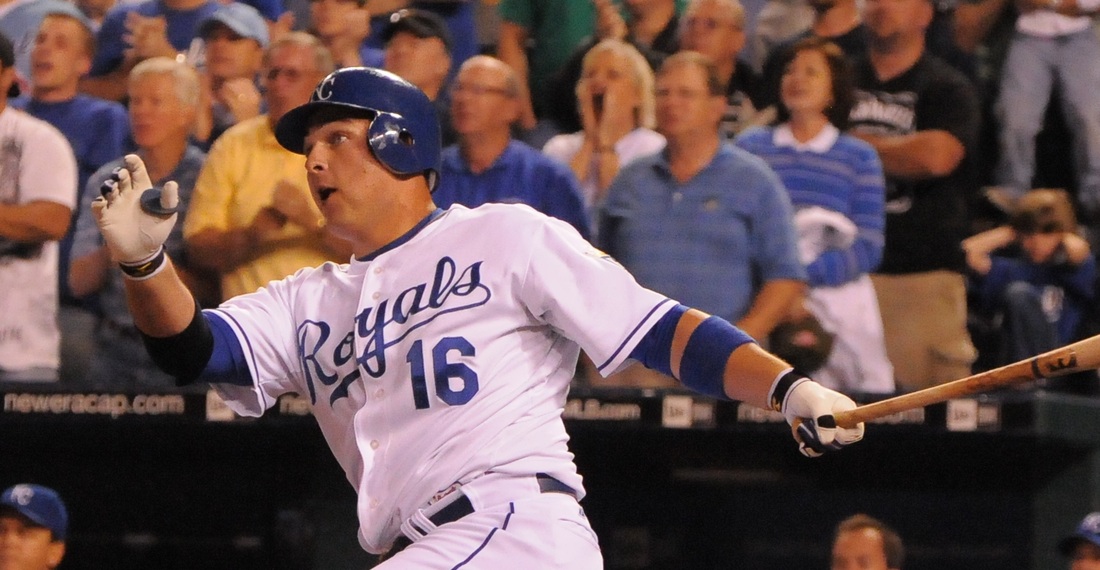
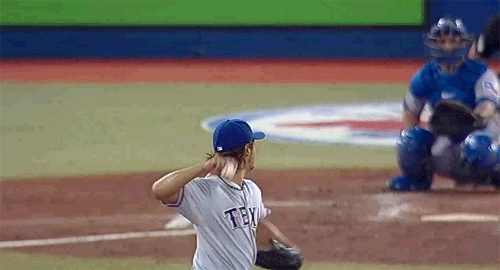
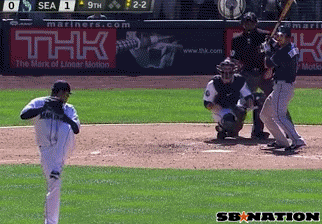
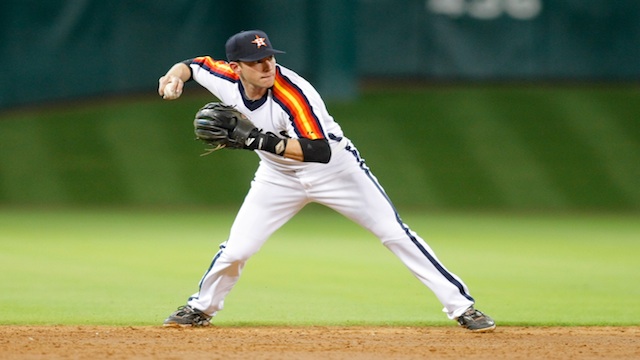
 RSS Feed
RSS Feed